Author Archives: Ajitesh Kumar
Online US Degree Courses & Programs in AI / Machine Learning
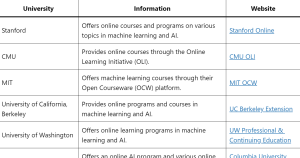
Data Science & AI / Machine learning has emerged as a transformative field, revolutionizing industries and shaping the future of technology. As the demand for professionals skilled in machine learning continues to rise, top universities in the United States (USA) have recognized the need to offer online degree courses and programs in this dynamic field. Through these online offerings, students can now access world-class education and earn prestigious degrees from the comfort of their own homes, while benefiting from the expertise of renowned faculty members. In this blog post, we present a curated list of leading US universities that provide online degree courses and programs in machine learning. Whether you …
Azure OpenAI Service Details & Pricing Info
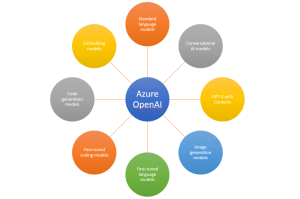
Azure OpenAI, an offering from Microsoft Azure, empowers developers, researchers, and enterprises with the transformative capabilities of Artificial Intelligence (AI). In this blog post, we explore Azure OpenAI’s service details and pricing information, providing you with insights to harness the immense power of AI. Azure OpenAI Services Information Azure OpenAI service provides a range of large language models from standard machine learning models to fine-tuned ones for specific tasks. We can build intelligent chatbots, automate code generation, or enhance natural language understanding. We can leverage conversational AI models for interactive virtual assistants that elevate user experiences and streamline operations. Image generation models can be used to produce stunning, realistic visuals. …
Recommender Systems in Machine Learning: Examples
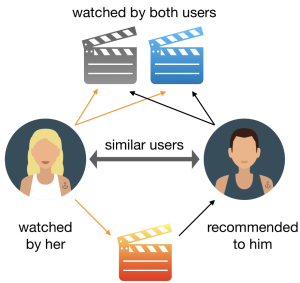
Recommender systems are used in machine learning to predict the ratings or preferences of items for a given user. They are commonly used in e-commerce applications to suggest items that a user may be interested in. One common example of a recommender system is Netflix. Netflix uses a recommender system to suggest movies and TV shows that a user may want to watch. The algorithm looks at past ratings and preferences to make suggestions. In this blog post, you will learn about recommender systems and some of the different types of recommender systems with the help of examples. Recommender systems make use of machine learning to predict the ratings or …
Binomial Distribution Explained with Examples
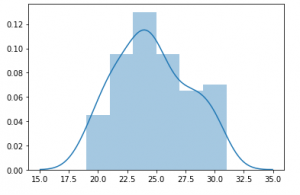
Have you ever wondered how to predict the number of successes in a series of independent trials? Or perhaps you’ve been curious about the probability of achieving a specific outcome in a sequence of yes-or-no questions. If so, we are essentially talking about the binomial distribution. It’s important for data scientists to understand this concept as binomials are used often in business applications. The binomial distribution is a discrete probability distribution that applies to binomial experiments (experiments with binary outcomes). It’s the number of successes in a specific number of trials. Sighting a simple yet real-life example, the binomial distribution may be imagined as the probability distribution of a number …
Online Data Science Courses at JHU 2023
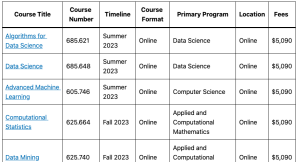
Are you interested in pursuing a Data Science course from the comfort of your own home? Look no further than Johns Hopkins University (JHU), offering a comprehensive range of Online Data Science Courses for the year 2023. Whether you are a working professional seeking to enhance your skills or a student looking to delve into the exciting world of data science, JHU’s online programs provide the flexibility and quality education you need. In this blog, we will explore the diverse array of online courses available at JHU, designed to cater to remote learners who want to excel in the field of Data Science. Discover the cutting-edge curriculum, esteemed faculty, and …
Model Cards Example Machine Learning
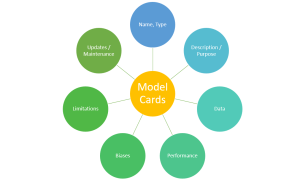
Have you ever wondered how to make your machine learning models more transparent, understandable, and accountable? Are you looking to implement responsible AI practices including ways and means to review and improve your existing model documentation? If so, you will learn about the concept of model cards, a powerful tool for documenting important details about machine learning models. You will learn the concepts with concrete examples and best practices that can serve as a guide for implementing or improving model cards in your organizations. The model card example can be seen as an standard template for model card which gets used in various different companies such as Google. What are …
Difference between Data Science & Data Analytics
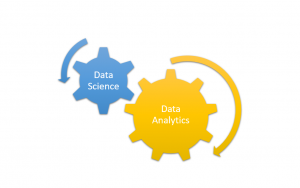
What’s the difference between data science and data analytics? Many people use these terms interchangeably, but there is a big distinction between the two fields. Data science is more focused on understanding and deriving insights from data while leveraging statistical and machine learning methods, while data analytics is an overarching term used to solve problems using analytical techniques while leveraging data. Both the terms are in a way related. In this blog post, we’ll explore the differences between data science and data analytics in greater detail, with examples of each. The following are key topics in relation to the difference between data science and data analytics: Different forms/purposes Different techniques …
Top US Universities for AI / ML Research

Artificial Intelligence (AI) has become an essential driver of innovation and economic growth in the 21st century. As a result, some of the best universities in the United States have been investing heavily in AI research to push the boundaries of this rapidly evolving field. In this blog post, we will explore the top 10 US universities for AI research, highlighting their achievements and providing links to their AI research homepages. Several leading / best universities in the United States have emerged as pioneers in AI research, recognizing its crucial role in driving innovation and economic growth. These institutions have made significant investments to establish themselves as top destinations for …
Hold-out Method for Training Machine Learning Models
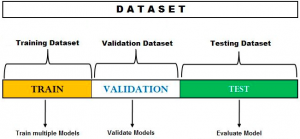
The hold-out method for training the machine learning models is a technique that involves splitting the data into different sets: one set for training, and other sets for validation and testing. The hold-out method is used to check how well a machine learning model will perform on the new data. In this post, you will learn about the hold-out method used during the process of training the machine learning model. Do check out my post on what is machine learning? concepts & examples for a detailed understanding of different aspects related to the basics of machine learning. Also, check out a related post on what is data science? When evaluating …
One-way ANOVA test: Concepts, Formula & Examples
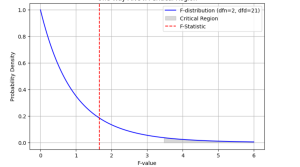
The one-way analysis of variance (ANOVA) test is a statistical procedure commonly used to compare the means values on a specific variable between three or more groups. The significance of the difference between the means of two samples can be judged through either t-test or z-test depending upon different criteria, but it becomes tricky when there is a need to simultaneously evaluate the significance of the difference amongst three or more sample means. This is where one-way ANOVA test comes to rescue. The ANOVA technique enables us to perform this simultaneous test and as such is considered to be an important tool of analysis. As data scientists, it is of …
Neyman-Pearson Lemma: Hypothesis Test, Examples
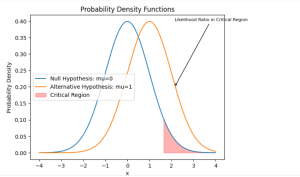
Have you ever faced a crucial decision where you needed to rely on data to guide your choice? Whether it’s determining the effectiveness of a new medical treatment or assessing the quality of a manufacturing process, hypothesis testing becomes essential. That’s where the Neyman-Pearson Lemma steps in, offering a powerful framework for making informed decisions based on statistical evidence. The Neyman-Pearson Lemma holds immense importance when it comes to solving problems that demand decision making or conclusions to a higher accuracy. By understanding this concept, we learn to navigate the complexities of hypothesis testing, ensuring we make the best choices with greater confidence. In this blog post, we will explore …
Pandas CSV to Dataframe Python Example
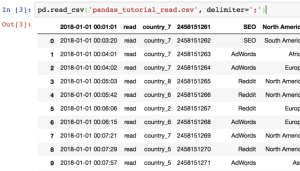
Converting CSV files to DataFrames is a common task in data analysis. In this blog, we’ll explore a Python code example using the Pandas library to efficiently convert CSV files to DataFrames. This approach offers flexibility, speed, and convenience, making it a valuable technique for handling large datasets. Read CSV into Pandas Dataframe The following is the code which can be used to read the CSV file from local drive: In case, you want to read CSV file from the URL, the following will be the code. As a matter of fact, nothing changes except for the fact that you pass the URL to read_csv function. The following are some …
Google Unveils Next-Gen LLM, PaLM-2
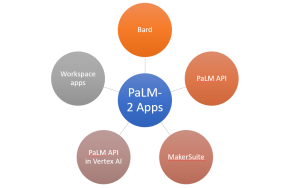
Google’s breakthrough research in machine learning and responsible AI has culminated in the development of their next-generation large language model (LLM), PaLM 2. This model represents a significant evolution in natural language processing (NLP) technology, with the capability to perform a broad array of advanced reasoning tasks, including code and math, text classification and question answering, language translation, and natural language generation. The unique combination of compute-optimal scaling, an improved dataset mixture, and model architecture enhancements is what powers PaLM 2’s exceptional capabilities. This combination allows the model to achieve superior performance than its predecessors, including the original PaLM, across all tasks. PaLM 2 was built with Google’s commitment to …
Occam’s Razor in Machine Learning: Examples
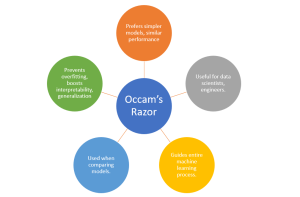
“Everything should be made as simple as possible, but not simpler.” – Albert Einstein Consider this: According to a recent study by IDC, data scientists spend approximately 80% of their time cleaning and preparing data for analysis, leaving only 20% of their time for the actual tasks of analysis, modeling, and interpretation. Does this sound familiar to you? Are you frustrated by the amount of time you spend on complex data wrangling and model tuning, only to find that your machine learning model doesn’t generalize well to new data? As data scientists, we often find ourselves in a predicament. We strive for the highest accuracy and predictive power in our …
Generative AI Risks & Concerns: Examples
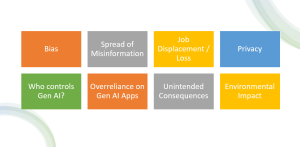
In the ever-evolving realm of artificial intelligence, generative AI has emerged as a groundbreaking technology, capable of producing incredibly realistic and creative content. From generating art and music to crafting compelling stories and even mimicking human conversations, the possibilities seem endless. Here is a sample representing AI generated talk between Bill Gates & Socrates. You can as well imagine about the endless possibilities. As with any powerful tool, there are risks and concerns related to generative AI that need to be addressed. In this blog, we will delve into the fascinating world of generative AI and explore some of the key concerns it brings forth. We will learn with some …
Outlier Detection Techniques in Python: Examples
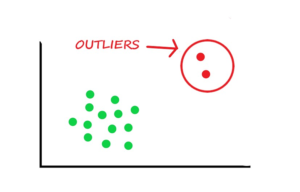
In the realm of data science, mastering outlier detection techniques is paramount for ensuring data integrity and robust machine learning model performance. Outliers are the data points which deviate significantly from the norm. The outliers data points can greatly impact the accuracy and reliability of statistical analyses and machine learning models. In this blog, we will explore a variety of outlier detection techniques using Python. The methods covered will include statistical approaches like the z-score method and the interquartile range (IQR) method, as well as visualization techniques like box plots and scatter plots. Whether you are a data science enthusiast or a seasoned professional, it is important to grasp these …
I found it very helpful. However the differences are not too understandable for me